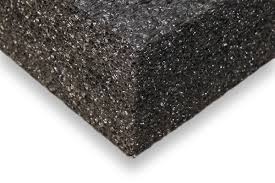

Polyethylene Polyurethane
There appear to be many misconceptions about the differences between polyurethane and polyethylene foam. Here are some facts to help guide you in understanding how these foams differ in their specifications
What is polyethylene foam?
Polyethylene is a firm, closed-cell foam. The polymer molecules are cross-linked providing more rigidity, and therefore this foam is often referred to as "crosslink" or "crosslink polyethylene" foam. The crosslink nature of this foam type causes it to try very hard to rebound to its original shape quickly, which has the effect of introducing a little bit of "bounce" in addition to offering shock absorption. Due to its rigidity, polyethylene does not distribute fall energy broadly. You could consider this a "shock repelling" foam.
What is polyurethane foam?
Polyurethane is a softer, open-cell type of foam that is made in varying degrees of firmness. Because the cells are open and not cross-linked, air can flow throughout the foam just like water can flow throughout a sponge. This characteristic makes the foam softer and gives it the ability to absorb shock energy better. It does not try to rebound as quickly as polyethylene, and it distributes the energy of the compression more broadly. This foam is generally used in products that need to provide more crash protection and are therefore thicker and softer.
-----------------------------------------------------------------------------------------------------------------


